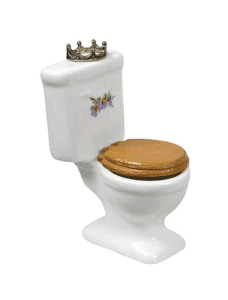In 1,700 B.C, the palace of Knossos was built, and it featured earthenware pans and latrines joined to a water supply that went through the terra-cotta channels.
The Evolution of Toilets
The evolution of toilets in Europe Prehistoric Rome is well-known for the introduction of public bathhouses - the baths were six times bigger than the St. Paul's Place of worship and could serve more than 1,600 people simultaneously.
Nonetheless, the Romans obligation to hygiene did not end with just bathing. At some point, they boasted 144 toilets for the community. The giant lavatories that existed in the metropolitan did not get used on a day-to-day basis. In most cases, the Romans disposed of their waste into the streets.
Medieval England later developed a protruding room that had a small opening where royals would do their business. The room got referred to as the Garderobe. It got suspended over a ditch that collected all manner of human waste making it a very unappealing hurdle for attacking armies.
Serfs and farm-workers relieved themselves in communal latrines located at the street ends. Later on, the Garderobes were ultimately substituted with a familiar modern day defecator: a lid box.
The Flushables
The flushable toilets In 1956, England made a stride into modern sanitation. Sir John Harrington designed a new kind of water closet that had a cistern with a small pipe that water could run on when released by a valve.
Harrington's invention got installed in Richmond by the queen, but it later took 200 years before Alexander Cummings technologically advanced it to the S- shaped pipe underneath the basin to keep out foul odors.
Before the end of 18th century, the flushable toilet had gone mainstream. In the 1880s, Prince Edward of England later hired Thomas Crapper a London plumber to build lavatories in royal places.
Even though Crapper patented several bathroom-related inventions, he did not invent the modern bathroom as believed. He was only the first person to display his bathroom wares in a showroom.
The Modern Bathroom
In the 20th century, the bathroom technology took off with flushable valves and water tanks that rest on top of the bowl. However, in 1994 passed an energy policy act that allowed flush toilets to utilize 1.6 gallons of water, which was less than the normal amount.
The policy led to dissatisfied consumers since many toilets clogged due to the low flow of water and companies had to embark on better models. Currently, 60% of the worlds' population enjoy the new better models.
If you're ever having toilet troubles in your Lakeland home call Samco Plumbing Services at (863) 509-1718!

